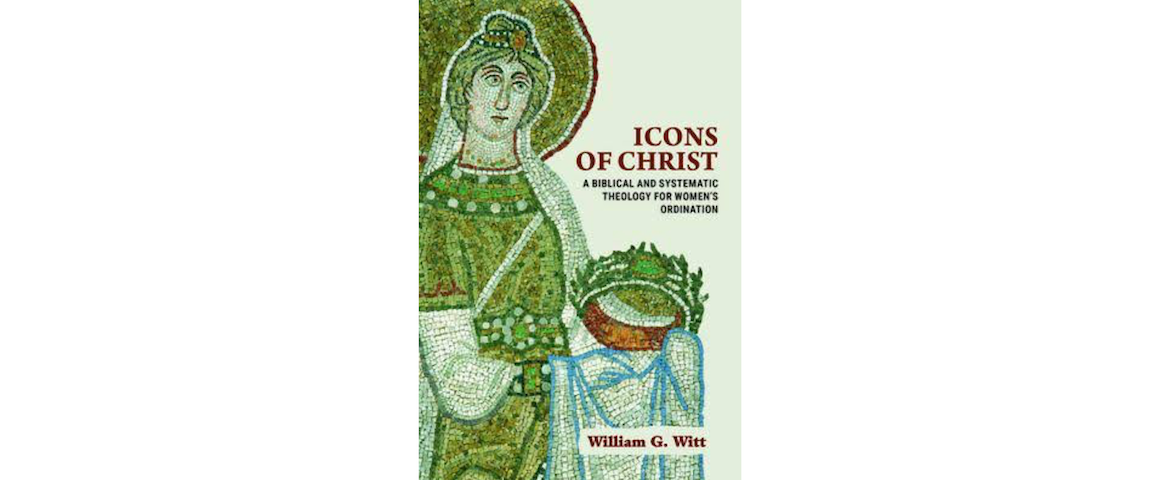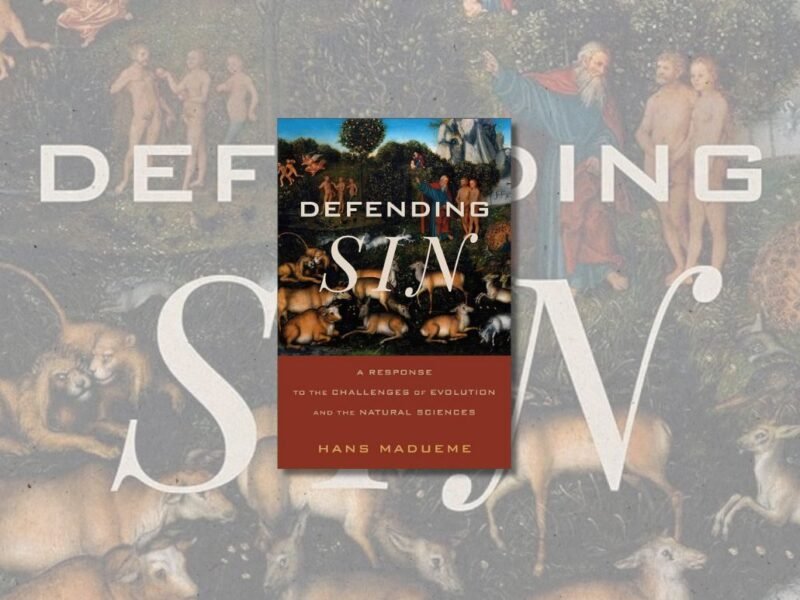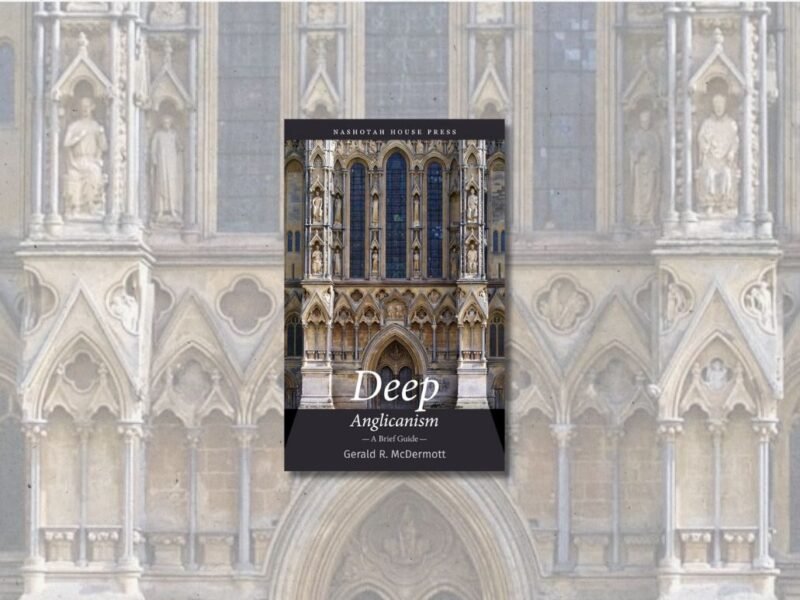- Review of Icons of Christ: Plausibility Structures
- Review of Icons of Christ: Errors of Protology and Eschatology
- Review of Icons of Christ: Errors of Philology
- Review of Icons of Christ: Symbolism and Conclusions
PART 1: WHY IS WOMEN’S ORDINATION PLAUSIBLE?
Icons of Christ : A Biblical and Systematic Theology for Women’s Ordination. Witt, William G. Waco: Baylor University Press 2020. 439 pp. $59.99 (cloth); $44.99 (paper).
Professor William G. Witt of Trinity School for Ministry in Ambridge, PA, has recently written a new book defending women’s ordination (hereinafter “WO”) to the presbyterate, or priesthood. Although there is nothing in the book specific to Anglicanism, its publication is significant within the ongoing struggle over women’s ordination in the ACNA, of which Witt is a member. The book comes with ringing plaudits from C4SO canon theologian Scot McKnight, who believes it “will become the standard book for years to come” and calls it a “critical study” that “subjects common rhetoric and typical tropes to a withering criticism.”
Is it persuasive, though? As one unconvinced, I hope that this four-part review of Witt’s book will help clarify the debate and explain why traditionalists continue to resist WO.
A Slippery Slope?
In the opening chapter, Witt attempts to avoid some of the most damning charges from the anti-WO side: namely, that WO is a product of theological liberalism and secular egalitarianism; and that it tends toward acceptance of homosexuality. The connection with theological liberalism and embrace of the sexual revolution is obvious and known to everyone: the Episcopal Church (from which many parishes of the ACNA are refugees), the Evangelical Lutheran Church in America, the Presbyterian Church in the USA, and the United Methodist Church—in short, nearly every denomination of the American mainline—are all instances of this trend. Witt, however, responds to this inductive observation by characterizing it as a post hoc, ergo propter hoc argument. To this, we should reply that the burden is on the pro-WO side: they are the ones attempting to overthrow centuries of continuous Christian practice; Witt needs to bring forth inductive proof that WO does not go hand in hand with theological liberalism and secular egalitarianism; he needs to give inductive evidence that WO has a good track record of not leading to liberalism and acceptance of homosexuality in the church.
The pivot to deductive reasoning in response to inductive anti-WO arguments should not be accepted. The fact that some ordained women do not approve of homosexuality, or are themselves theologically orthodox and opposed to secular egalitarianism, is nothing to the point. The issue is not what this or that woman priest believes, but the fact that ordaining women requires an approach to Scripture that is unable to oppose homosexuality in an adequate way. The exploitation of Scripture’s silence (“Scripture doesn’t explicitly mention committed same-sex relationships”), the reinterpretation of crucial words by new lexicography (“arsenokoites denotes a predatory or exploitative person”), the destruction of the natural distinction between the sexes, the ideologically driven re-imagination of the first-century context so that Scripture’s prohibitions are confined to very narrow and specific circumstances, and above all, the exploitation of changed plausibility structures and a favorable zeitgeist to paint the traditional position as hateful and bigoted – all of these are techniques that advocates of homosexuality in the church share in common with advocates of WO.
In the same paragraph where Witt denies that WO leads to acceptance of homosexuality, Witt himself makes the stunning admission that he thinks “the prohibition against ordaining homosexuals is not a prohibition against a class, but against a behavior…Sexual orientation in itself is not (or at least should not be) a barrier to ordination.” (17) This is naive. Modern homosexuality is first and foremost a matter of self-expression: homosexual sex acts are a performative vindication of their perpetrator’s chosen or perceived sexual identity in opposition to the constraints of biology and tradition. Modern LGBT identity is more fundamental than sex acts, and may not even involve sex acts (e.g. in the case of the “T”). Shall we ordain transgender persons, as long as they do not engage in any of the sex acts forbidden by the Torah? For Witt to reduce the issue to one of behavior is to miss the place that behavior has in expressive individualism.
The pastoral epistles assume that a man will be “the husband of one wife” and “manage his household well,” “having his children in submission with all reverence” (1 Tim. 3:4). The natural family, headed by the husband and father, is the normal background out of which the episkopoi and presbyteroi of the church are produced and selected. Such a norm is valuable in part because it proves that a man has the proper affections, habits, and experience of male leadership in his own family – and these same things are necessary for holding the office of episkopos in the church. In the Pastoral epistles, the marriage of a Christian pastor is not the performative expression of his chosen sexual identity. It is an aspect of his male existence within the context of the family. By his work, his marital and paternal relationships, and his experience as an authority within the gendered sphere of the natural family, a man is shaped into a leader fit for the church. He has a demonstrated ability to take care of others, including his wife. Within the natural family, masculinity and feminity are not fungible. Celibate homosexuals are eo ipso at odds with this normative context of the natural family; they have, by their self-identification in terms of their attraction to the same sex, rejected the life and habits and formative experiences that fit a man to be a shepherd of God’s flock. Both the LGBT-affirming and pro-WO positions treat natural family as irrelevant to the question of ordination. Instead, as we shall see, Witt insists on treating human beings as individuals whose differentiation as male and female is secondary to their genderless essence.
The Charge of Misogyny
Early in the book, Witt attempts to frame the terms of the debate as a syllogism:
The argument in favor of ordaining women is the same argument as the argument for ordaining men. Premise: Some human beings should be ordained. Minor premise: Women are human beings. Conclusion: Therefore some women should be ordained. (15-16)
Witt goes on to imagine opponents of WO objecting to the content and phrasing of these premises, but he overlooks the bigger problem: the syllogism he presents is a formal fallacy. The middle term, “human beings,” is distributed in neither the first nor the second premise: that is, neither premise says anything about all human beings, so there is no guarantee that they refer to the same subset of human beings. With an undistributed middle term, the entire syllogism is invalid.
Apparently unaware of the fallacy he has committed, Witt throws down the gauntlet to opponents of WO: if they are to show that women cannot be ordained, then they must change the first premise to specify some activity of ordained persons that women cannot do (15-16). Witt charges opponents of WO with wrapping themselves in “tradition” while abandoning the traditional justifications for not ordaining women: “The argument from tradition is not the traditional argument.” To demonstrate what he thinks the traditional argument actually was, he parades a series of embarrassingly misogynistic quotations from medieval and Reformation-era theologians like Aquinas, Epiphanius, Bullinger, and John Knox. He quotes Spurgeon’s harsh comment that “a woman’s preaching is like a dog walking on his hind legs.” No one today holds such views, Witt says, not even Wayne Grudem. He is quite right that modern opponents of WO do not say these sorts of misogynistic things; they don’t claim that women are more irrational, ontologically inferior, and prone to temptation than men. Rather than giving them credit for abandoning offensive and misogynistic arguments, Witt hangs these past statements as an albatross around the neck of the anti-WO position.
When opponents of WO characterize women as “heirs together of the gift of life,” or joint image-bearers of God, or fully human, while also stating that they are “the weaker vessel” and are not called to exercise the office of episkopos, Witt charges that they have betrayed the heritage of misogyny bequeathed to them by the Church Fathers and Reformers; that they are constructing a newfangled edifice to prop up a practice that has been left suspended in mid-air once the moorings of medieval misogyny have been removed. Witt’s lack of sympathy and imagination is severe on this point. Does he really believe that our forebears in the Christian faith were so blind as to suppress a primitive and apostolic institution of egalitarian ministry? That they hated women, and advocated structures of society that were to the detriment of women? Is this a charitable reading of Christianity past? Ultimately, this caricature of the Christian past represents a failure to understand the sexes in premodern ages. It is the biggest obstacle preventing Witt and other egalitarians from doing two things: (1) interpreting the Bible correctly, i.e. in its premodern historical context, and (2) understanding why opponents of WO are so adamantly opposed to it.
Plausibility Structures
Charity toward our forebears in the faith ought to lead us to ask, “What has happened to make WO seem plausible to people in our day, even though it was unthinkable to all past ages of the Church?” The answer lies in the following:
1. Technology, especially labor-saving and contraceptive inventions, has freed human beings from the constraints of biology.[1] This has led to…
2. The “decondensation” of society, family, and work. As Sarah Perry and Alastair Roberts have noted, “Almost every technological advance is a de-condensation: it abstracts a particular function away from an object, a person, or an institution, and allows it to grow separately from all the things it used to be connected to.”[2] This has led to the fragility and attenuation of the family and of the home as the locus of work and vocation for both men and women, and to the replacement of a natural mode of being men and women with a profoundly unnatural and artificial one.
3. This modern approach to the sexes sees them “in competition for values and positions that are genderless,”[3] in contrast to the premodern relation of the sexes, in which tools, spaces, activities, language, work—in short, all of life—was gendered. “An industrial society cannot exist unless it imposes certain unisex assumptions: the assumptions that both sexes are made for the same work, perceive the same reality, and have, with some minor cosmetic variations, the same needs.”[4] It is a central assumption of Witt’s arguments, as of all pro-WO arguments, that ordination is just such an ungendered good, and thus that some sufficient reason must be adduced why it should not belong as much to women as to men. Witt is not unusual in this assumption. It is, after all, manifested in the way the pastorate is filled in modern churches: It is often understood that the “successful candidate” may be flown in from thousands of miles away; that he need not have any connections or relationships or reputation with the city or town in which he is to pastor; and if he has a household, it is not a significant source of his personal authority. Rather, the authority such a pastor wields is a naked authority conferred on him simply in virtue of his appointment by the bishop, the vestry, the session, or the presbytery. It is an authority without roots in the organic structures of society; it does not arise from the gendered realm of the natural family – and this is, indeed, what makes it a possible object of competition between the sexes. In contrast, the Bible explicitly points to the organic structures of society as the source of a man’s fitness to shepherd the church: “For if a man know not how to rule his own house, how shall he take care of the church of God?” (1 Tim. 3:5); he is expected to be of good reputation; proven in financial matters; and to have proven himself in family life. In all this, the Bible is thoroughly un-modern.[5] Moreover, in the ancient world, all of these considerations are indelibly gendered. They are not what Illich calls “sex roles.”[6] The Bible does not consider pastoral office as a genderless good. Much more could be said on this point: the change from premodern to modern society has touched every aspect of life for both sexes. This transformation of all of society in turn has resulted in…
4. A new experience of what it means to be human,[7] namely, the rise of what the philosopher Charles Taylor has called “expressive individualism”[8] – human beings constructing and expressing their own identity, especially in their sexual behavior, so that the constraints of tradition and the givenness of biology are seen as oppressive. As a result of this sea-change in the understanding of human beings…
5. A gulf of imagination now separates modern scholars from the world of the Bible and antiquity, in a way that was not the case in premodern eras. It is sometimes imagined that life in patriarchal ancient Israel was a misery for women, so that modern feminists may felicitate themselves that they were not born in the first century. But the goods which women sought in the premodern society of the Bible were gendered goods, and are ever increasingly unattainable for modern women: “Give me children, or I die!” “Are there yet any more sons in my womb, that they may be your husbands?” This failure of imagination has opened the door for…
6. Feminist scholarship as a form of “grievance studies” determined to reread, problematize, and remake the texts that are the sources of authority in church and society. Witt draws on the fruit of this industry, frequently citing Tikva Frymer-Kensky, a Jewish feminist who is one of the leading lights of feminist criticism of the Bible.
In contrast to all these trends, the Bible treats the sexes in their integrity, inextricably enmeshed in, and shaped by, the relations of the natural family and the typology of the irreducibly sexed cosmos. How is it, for instance, that Joseph’s family knows that the sun in his dream represents his father, and the moon his mother? The meaning of fatherhood, the voice of a father, is everywhere assumed to be important in Scripture – and is assumed to be distinct from motherhood and the voice of a mother. The sex of sacrificial animals is minutely specified in the Torah, though the modern mind has a hard time understanding why this should be so. “Is not a dead cow just as good as a dead ox?” The primarily domestic calling of women, so despised and rejected by modern feminism,[9] is assumed as fundamental throughout the Scriptures. For traditional Christians, the proposal to replace male priests with female ones is as unthinkable as the idea of replacing their biological fathers with second mothers. To persuade traditional Christians, Witt would need to address the fact that they have not embraced the plausibility structures that make WO seem right and good.
In the view of traditionalists, modernity has not been beneficial to the sexes. It has not merely pressed the sexes into new extrinsic relations and activities. Rather, it has altered what human persons are. The sexes have been deracinated, stripped of relationship and symbolism. Even our biological bodies and their capacities and relationships are now increasingly extrinsic and peripheral to who we are. The sexes are thought of as socially constructed and imposed on human beings by different times and cultures. Modernity considers human persons mainly in terms of intrinsic ontology, and this intrinsic ontology does not include sexual differences. Witt approvingly quotes Tikva Frymer-Kensky saying that, “As far as the Bible presents humanity, gender is a matter of biology and social roles, it is not a question of basic nature or identity.” (278) He then adds, “In other words, the gender distinctions that are central to what is here called the ‘argument from symbolism’ are simply not present in the Hebrew Bible (Old Testament). The most significant assumption concerning male-female symbolism in the Bible is that women are like men.” For Witt, sexual differences are not part of the basic nature or identity of human beings.[10]
We see this same ontological assumption in Witt’s approach to the sexes in OT Israel:
The gender division in ancient Israel originated in basic socioeconomic realities. The household was the basic unit of production and men’s and women’s roles were determined by the biological reality that women bore and nursed children and men did not. (67)
Note that Witt speaks in terms of “roles.” This is a highly revelatory choice of term. Illich again is helpful: “Outside industrial societies, unisex work is the rare exception, if it exists at all. Few things can be done by women and also by men.”[11] But in modernity, the opposite is the case: not only are we told that men and women can both do most things, but they are also more alike in the things that they can avoid doing: neither men nor women need to bear and nurse children, thanks to the marvels of contraception — or at least, that is the lie our society has long been telling.[12] And in the information age, the “basic socioeconomic realities” have changed, so that men’s greater bodily strength is mostly of no advantage in the modern workplace, being replaced with engines and hydraulics, so that women can do nearly all the same jobs that men do. The way is then cleared for women and men to become mostly fungible. And since pastoral ministry involves neither the sexual organs nor physical strength, it appears to Witt to fall into the category of things that women can do just as well as men.
Space does not permit me to elaborate on this point, but I believe the church should stand against large parts of this modern anthropology; we should protest against the violence to human nature that modernity has wrought in the name of the expressive individual self. We need to examine the enabling conditions of modernity that have made women’s ordination plausible. Modernity has changed human beings, and has promoted a new ontology of the sexes. Witt takes these changes and this ontology as givens.
Notes:
- Cf. Murray Jardine, The Making and Unmaking of Technological Society (Grand Rapids: Brazos Press, 2004); C.S. Lewis, The Abolition of Man (New York: HarperCollins, 1974), especially ch. 3; Ivan Illich, Gender (New york: Random House, 1982). ↑
- Sarah Perry, “A Bad Carver.” Available online at https://www.ribbonfarm.com/2016/11/03/a-bad-carver/See also Alastair Roberts, “The Decondensation of Humanity.” Available online at https://alastairadversaria.com/2016/11/29/the-de-condensation-of-humanity/ ↑
- Ivan Illich, Gender, 129. ↑
- Illich, Gender, 9. ↑
- For more on this point, see Alastair Roberts’ article “How Has Modernity Shifted the Women’s Ordination Debate” (May 6, 2020), available online at http://northamanglican.online/how-has-modernity-shifted-the-womens-ordination-debate/ . ↑
- “Gender is substantive. This is not true with sex in the economic neuter. In the perspective of the neuter, sex is a secondary attribute, a property of an individual, an adjective characteristic of a human being. The concept of sex role could not come into being until society’s institutions were structured to meet the genderless needs of genderless clients with genderless commodities produced in a genderless world. The sex role builds on the existence of genderless man.” Illich, Gender, 80. Note that Illich uses “gender” in almost the opposite sense from the way it is used in modern gender theory. He means something more natural, not something more artificial and imputed, than biological sex. ↑
- On the historical development of this new conception of human personhood and identity, see Carl Trueman, The Rise and Triumph of the Modern Self (NY: Crossway, 2000). ↑
- Charles Taylor, A Secular Age (Cambridge, Massachusetts: Harvard University Press, 2007), 473-475. ↑
- Cf. F. Carolyn Graglia, Domestic Tranquility (Dallas, TX: Spence Publishing, 1998). ↑
- Illich remarks: “Gender is substantive. This is not true with sex in the economic [sc. modern, industrial] neuter. In the perspective of the neuter, sex is a secondary attribute, a property of an individual, an adjective characteristic of a human being. The concept of sex role could not come into being until society’s institutions were structured to meet the genderless needs of genderless clients with genderless commodities produced in a genderless world. The sex role builds on the existence of genderless man.” Illich, Gender, 80. This is exactly what Witt is doing. He is arguing about the concept of the pastorate as a sex role, and is thus treating men and women as genderless individuals. ↑
- Illich, Gender, 67. ↑
- The COVID pandemic has caused some to realize that this brave new world rests on some ugly realities. See, for instance, Louise Perry, “The pandemic has disrupted the ‘Ponzi scheme’ of liberal feminism – and poorer women are the losers” in The New Statesman, 27 January 2021, available online here: https://www.newstatesman.com/politics/feminism/2021/01/pandemic-has-disrupted-ponzi-scheme-liberal-feminism-and-poorer-women-are ↑







'Review of Icons of Christ: Plausibility Structures' have 7 comments
February 22, 2021 @ 10:55 pm James Basinger
Thanks for your article. Much food for thought.
February 23, 2021 @ 8:41 am Rob Philp
I’m wondering if the author considers the pre-modern ontology he favors should be treated as de fide by faithful Christians. If so, how should it be taught? Would a true catechesis need to first disabuse us of a modern ontology, then re-educate us in a pre-modern one? Sounds daunting.
June 5, 2024 @ 7:24 pm Marmee March
We need the arts for this part.
March 3, 2021 @ 9:15 am Fr. Hunter Van Wagenen
These articles have greatly blessed me! Thank you for writing them, and for your clarity in addressing the muddled arguments for WO summed up in this book. Rereading these articles with my wife has both of us brainstorming about how we can resist the modern anthropology that technology has helped create.
On the topic of the “slippery slope,” it is interesting to note that in the current controversy over sexual identity within the ACNA, it is bishops and clergy from the most virulently pro-WO dioceses that are giving the strongest objections to the College of Bishops’ statement from January. William Witt was one of the initial signatories on Pieter Valk’s response letter. As you said, the burden is on the pro-WO side to show INDUCTIVELY why these are separate issues.
God bless you.
May 7, 2021 @ 10:34 am Marmee March
Such a good article. Underscores that we need more artists to help show these truths in ways that go right to the heart, past the watchful dragons.
September 17, 2021 @ 12:33 pm Bryan McLaughlin
One should note, William Witt has offered an extensive and detailed rebuttal to Mr. Colvin\\\’s review. It can be found here:
http://willgwitt.org/theology/a-review-of-a-book-i-did-not-write/#more-3791
June 5, 2024 @ 7:22 pm Marmee March
Re-reading this article. . . \”he is expected to be of good reputation; proven in financial matters; and to have proven himself in family life. In all this, the Bible is thoroughly un-modern. . . . Much more could be said on this point: the change from premodern to modern society has touched every aspect of life for both sexes.\”
\”I am the Very Model of a Modern Major-General!\”